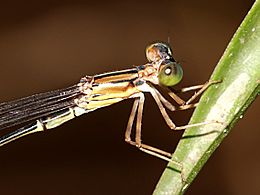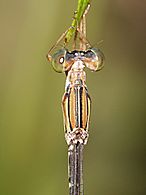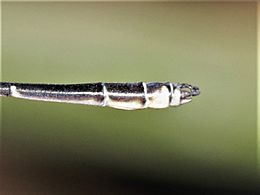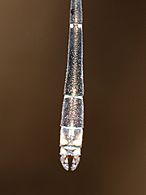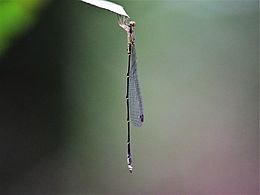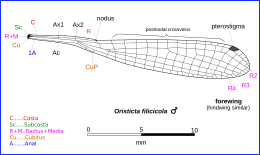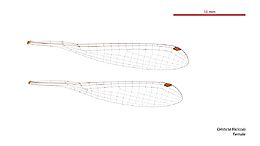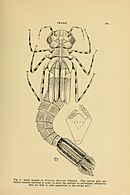Slender wiretail facts for kids
Quick facts for kids Slender wiretail |
|
|---|---|
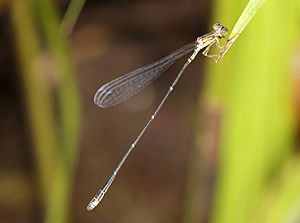 |
|
| Slender wiretail Oristicta filicicola, Cairns, Australia | |
| Conservation status | |
| Scientific classification | |
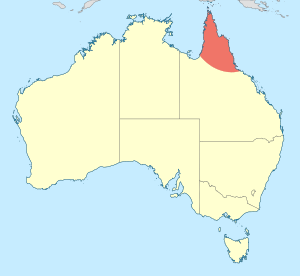 |
The Slender Wiretail (Oristicta filicicola) is a type of damselfly. Damselflies are like small, delicate dragonflys. Until 2017, this was the only known species in its group, called Oristicta. It's a medium-sized damselfly, usually thin and not very brightly colored. You can only find the Slender Wiretail in north-eastern Australia. It loves living near streams in rainforests.
What Does the Slender Wiretail Look Like?
Its Body
The Slender Wiretail has olive-green eyes. These eyes are set far apart on its small head. Its middle body part, called the thorax, is light colored underneath. It gradually turns light green on the sides. There are dark lines along its seams. The top of its thorax is brown with black edges. A white line runs down the middle of its back.
Its main body, called the abdomen, is long and thin. The top part is a shiny metallic-black, like steel. The bottom part is cream colored. At each joint of the abdomen, the lighter color sweeps up. This forms a narrow ring. On the last two segments (9 and 10), the light color sweeps up more. This creates a dark, wedge-shaped pattern.
Scientists measured 26 Slender Wiretails. On average, they were about 45 millimeters (about 1.8 inches) long. Male damselflies have special parts at the end of their body. The upper parts are club-shaped and curve inwards. The lower parts are about half as long. Female damselflies have a black part called an ovipositor. This helps them lay eggs. They also have two small, pointed parts that form a "V" shape.
Its Wings
The wings of the Slender Wiretail are clear, like glass. They have dark lines, called veins. The average wingspan is about 50 millimeters (about 2 inches). Near the tip of each wing, there's a dark grey spot. This spot is called a pterostigma. It has a black outline.
The front and back wings look very similar. Scientists use special features of the wings to tell this damselfly apart. For example, a certain crossvein (Ac) is located between two other veins (Ax1 and Ax2). It is closer to Ax1. Also, a main vein called the median sector branches off after another special crossvein.
Gallery



